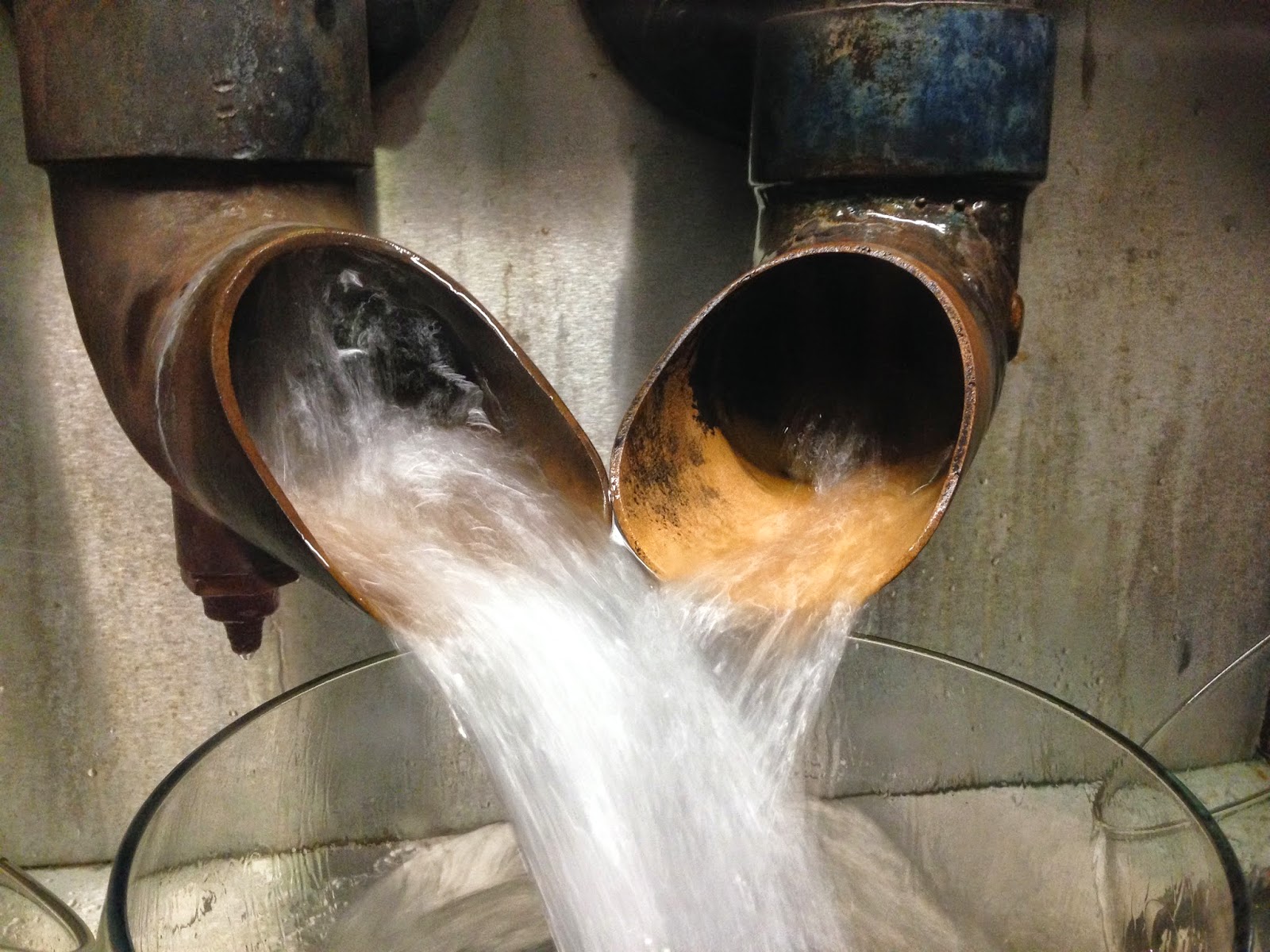The Stillman takes the wash that was made in Part 1, and uses it to make the spirit that will become whisky after a period of maturation.
Glenfarclas has 6 stills: 3 wash stills and 3 spirit stills.
A still is a large, bulbous vessel made from copper. 25,000 litres of wash (the "beer" from Part 1) is pumped into the wash still, until it comes up to just above the widest point of the still. A gas fire is lit underneath the still and the alcohol in the wash starts to evaporate, along with some of the water. The alcohol and water vapours rise up to the top of the still, around a tight bend and outside to a condenser. The condenser cools the vapours, turning them back into a liquid. This liquid is called "Low wines". It is roughly 20% alcohol and gets piped into a holding tank.
The low wines from the holding tank are then pumped into a spirit still. The spirit still takes around 20,000 litres, and the process starts again. As the still heats up, the alcohol begins to turn to vapour. The alcohol that vapourises at the lowest temperature (around 58 degrees celcius) is a mixture of Methanol and Acetone. These are "bad alcohols", the the ones that cause blindness and death.
Needless to say, blindness and death are undesirable charateristics in whisky, so the stillman lets this flow back into the holding tank to be mixed with low wines and distilled again. After running for 20 minutes, the liquid coming off the still is usually 63 - 70% ethanol, which is the alcohol we know and love. It is referred to as "spirit" at this point and goes into a tank, ready to go into a cask. The spirit flows for about 7 hours, before the alcohol is mostly evaporated. The stillman redirects the weaker liquid that is now coming from the still, known as "feints" back into a tank with the low wines and the "bad alcohols", to be distilled again.
All this is contorolled with rather Steampunk-looking windowed brass box called a Spirit Safe. All the liquid that comes off the stills runs through the Spirit Safe and allows the Stillman to see that the liquid is flowing and lets him take a sample of that liqid at any time in the process to measure the temperature and alcohol levels, and control the swap from feints to spirit and back again.
 |
| Checking the gravity and temperature of spirit in the spirit safe |
If you go on a distillery tour, the tour guide will often refer to the "head", the "heart" and the "tail" when describing the distilling process. The head being the "bad alcohols", the heart being the spirit that becomes whisky, and the tail being the weaker liquid that gets distilled again.
 |
| This is the whisky you'll be drinking in your old age, running through the spirit safe |
There are 3 Stillmen, and they each work five 8-hour shifts a week, from Sunday night, until Friday afternoon, with Friday usually devoted to cleaning. The job is a little bit of chemistry, a little bit of physics and a whole lot of watching the clock. Each process and sub-process has an expected time that it will take, so the Stillman always needs to be aware of what is going to happen next and when.
